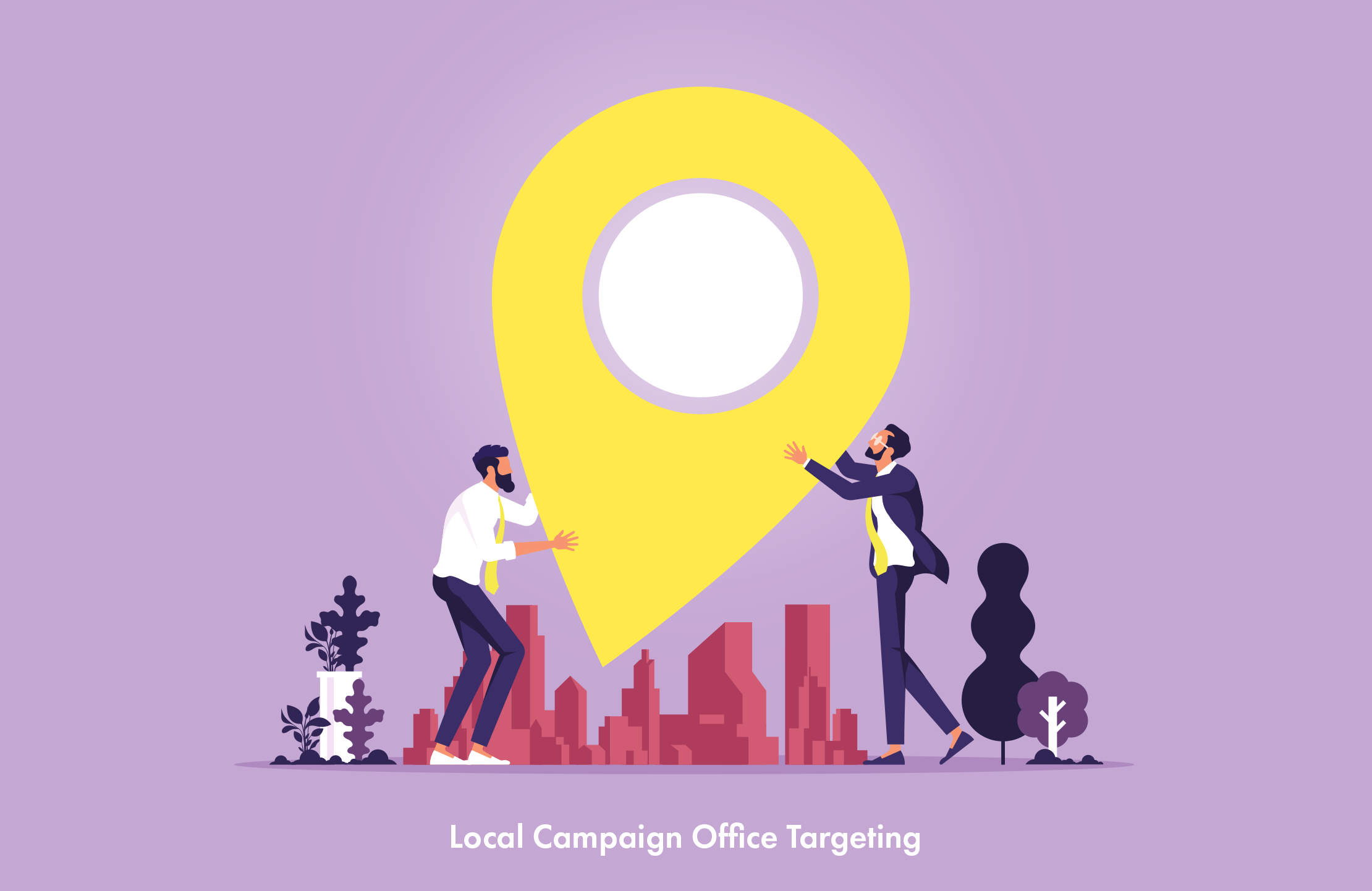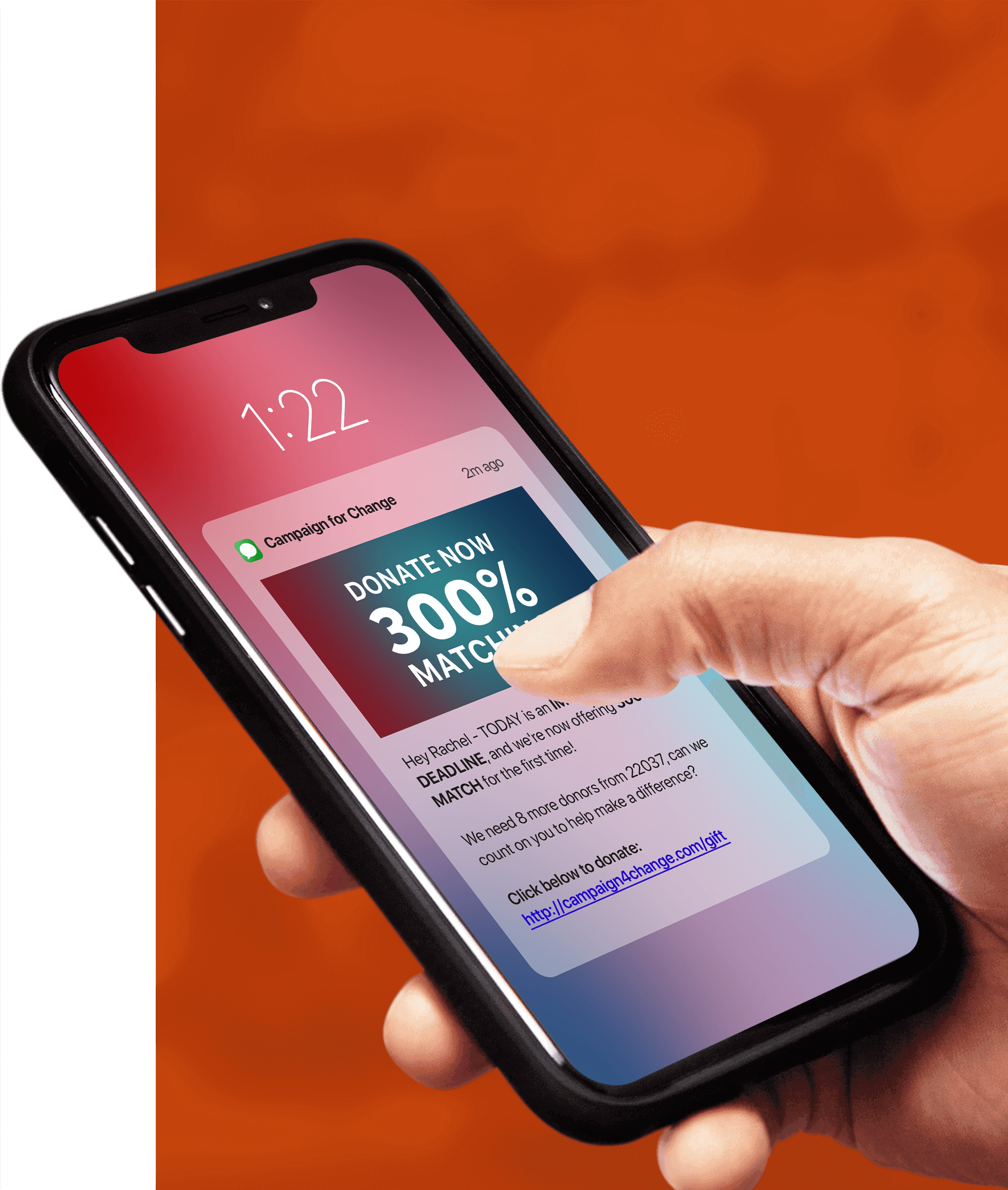We’ve previously discussed why it’s important to make your political text messaging local, even in a national or statewide campaign. When done correctly and with the right tools, this approach is called geo-targeting. Geo-targeting technology helps campaigns send SMS political text messages that are geographically relevant to the voter because they’re hyperlocal, making the messaging more meaningful.
This blog post discusses geo-targeting for political text messaging, including why its popularity has grown and how to use geo-targeting to raise more donations and win your next election.
What Is Geo-Targeting?

To see solid examples of geo-targeting, look no further than the text messaging used by the business marketing community. Fast-food and quick-casual brands have thousands of locations across the country. Instead of sending mass, nationwide ads, these brands use geo-targeting to reach consumers in a specific zip code with special offers unique to that region.
But geo-targeting isn’t limited to restaurants and retailers. Geo-targeting is ideal for political campaigns, especially considering how many local offices a national political campaign maintains across a state and the nation.
Why Should Political Groups Use Geo-Targeting?
Geo-targeting allows political organizations to fine-tune their political text messaging and deliver more precise communication to subscribers. In a political environment where a few hundred votes often decide the outcome of an election, delivering a relevant message and getting out the vote can mean the difference between winning and losing an election.
Using geo-targeting in your political text messaging also allows your campaign to strengthen its bond with voters. They’ll be more willing to donate if they perceive that, even in a national campaign, your candidate is aware of issues in their backyard.
The Difference Between Geo-Targeting and Geo-Fencing
You may have heard of a related term called geo-fencing, a technology that allows a business to apply a perimeter around one or multiple points on a map. When an existing mobile subscriber enters one of those perimeters, the geo-fence is activated, and a text message goes out to that mobile subscriber.
To use geo-targeting for your political campaign, you must have a two-fold strategy: get constituents to sign up for your political text marketing program, then message them using geo-targeting. Let’s look at each one in more detail.
What You Can Do With Political Geo-Targeting
With the information you’ve collected from your subscribers, you can geo-target each voter based on their zip code, state, time zone, and other geographical details.
Zip Code Targeting

With zip code targeting, you can let voters know about campaign appearances, rallies, phone banking, and other volunteer opportunities in their neighborhood. You can also appeal to them on local issues or tell them when a local congress member, a mayor, or county commissioner has endorsed your candidate. In states where your candidate has solid support, you can recruit volunteers to phone bank in other states.
State Targeting

Your campaign can also send political text messages to voters in specific states. This type of targeting is great for events and letting voters know about endorsements from state-level officials and politicians. You can also address statewide issues or initiatives and let voters know your candidate’s position on them. On election night, let voters know about important voting deadlines, real-time election outcomes, and the action voters must take to ensure their candidate wins in their state.
Time Zone Targeting

Time zone targeting helps ensure voters receive a campaign’s text message right before a key appearance on television or radio or during debates, regardless of the mobile subscribers’ time zones. Time zone targeting also helps campaigns avoid sending a message too early in the morning or too late in the evening while the subscriber is asleep.
Local Campaign Office Targeting

Collecting a voter’s street address, city, state, and zip code helps political campaigns tag each subscriber with an ID indicating their local office for that campaign. That way, political campaigns can send text messages only to subscribers tagged with that office ID. This is an excellent strategy for recruiting local volunteers, getting the word out about events, and letting supporters know about special appearances.
Radius Targeting

Campaigns can send political text messages to voters within a certain distance of a specific zip code, city, or even a campaign office location. This type of targeting can help make voting as simple as possible for voters by letting them know they’re near a polling location or ballot dropbox.
Gathering Data for Geo-Targeted Political Text Messaging
To text message subscribers based on geographical location, you need, of course, their location. Below are a few ways to gather subscriber geographical information in compliance with the law.
SMS Data Capture
Use your SMS marketing program to identify subscriber geographical data. When subscribers opt in to your SMS campaigns by texting in a keyword to a short code (for example, texting VOTE to 12345), thank them for subscribing and invite them to reply with their zip code. An impressive 78% of voters indicated that text messaging is the best way to contact them. Many voters are eager to provide their zip code if it means they’ll receive tailored, relevant text messages whenever possible based on their area and interests.
Website Data Capture
Another way to gather geographical data and SMS subscribers is through your website. When subscribers sign up to donate or join your SMS marketing program, invite them to fill out a few extra fields. Consider asking for the basics: name, email address, mobile phone number, street address, city, state, and zip code. This information is often already stored in their browser’s auto-fill features, so chances are that once they start filling in the first field, the rest of the form will automatically populate for them.
Mobile Website Data Capture
If subscribers sign up through your mobile website (rather than the desktop version of your site), we recommend limiting your information requested to just their zip code. Asking too many questions before allowing someone to opt in to your SMS program may backfire. Plus, the zip code automatically covers the other locational basics like city and state. If your mobile subscriber gets overwhelmed, they may not complete the SMS opt-in process on a mobile screen.
In addition to the methods mentioned earlier, the following strategies can help identify subscriber locations for geo-targeted text messages.
Political Party
You can access the county voter registration records if you have a general idea of the geographical area where a voter lives. There are also several online tools at the state and federal level through the respective political parties. Accessing voter registration records is often free of charge.
Location Lookup
For a small lookup fee per phone number, you can use a location lookup to determine the longitude and latitude of that subscriber’s mobile phone immediately after opting in. A campaign can then use that longitude and latitude to determine a mobile subscriber’s city, state, and zip code. Although it’s a business application, a great example of this is Qdoba’s SMS marketing campaign.
Tatango Is Your Guide to Geo-Targeting
Campaigns that partner with Tatango routinely see an average ROI of $5 for every $1 invested in political text message marketing. If you want to learn more about using geo-targeted text messaging or how your campaign can see this type of ROI, contact the SMS marketing experts at Tatango.


